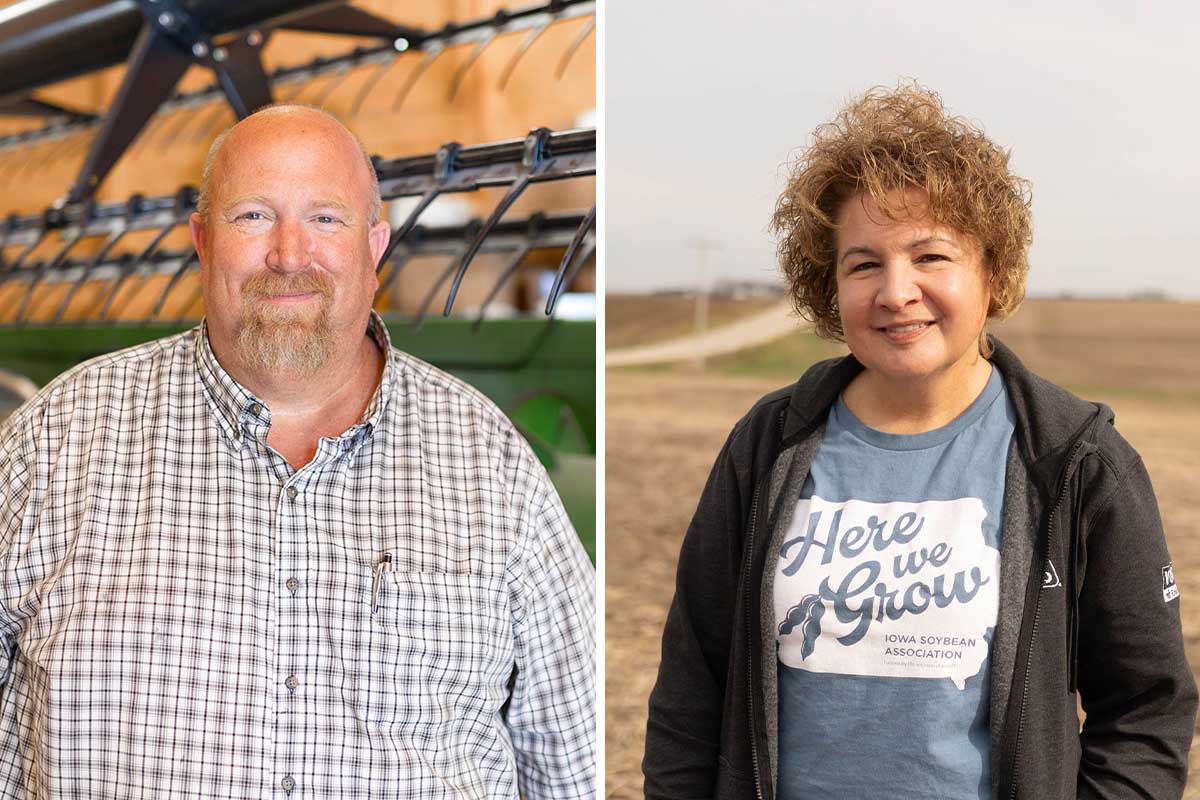
(Photo: Iowa Soybean Association / Joclyn Bushman)
Iowa farmers assume leadership positions on the United Soybean Board
February 1, 2025 | Brock Johnston
Two Iowa farmers have been selected for leadership positions on the United Soybean Board (USB). Suzanne Shirbroun of Farmersburg accepted her three-year appointment at a confirmation hearing in December. Robb Ewoldt of Davenport, who has served as a USB director since 2022, was elevated to USB’s Executive Committee.
Farmer leadership directly represent all U.S. soybean growers with oversight of national soybean checkoff dollars that support research, market development and promotional efforts to boost farmer profitability and opportunities.
Shirbroun and Ewoldt are among the board of 77 farmer directors from across the country; four representing Iowa. Both farmers will serve alongside Brent Renner of Klemme and Tim Bardole of Rippey, as Iowa soybean farmers serving as USB directors.
“USB directors play an important role in managing soybean checkoff dollars,” says Shirbroun, an Iowa Soybean Association (ISA) past president. “I’ve seen firsthand how the checkoff has supported a vast amount of innovative research and other efforts that may not be possible otherwise. Balancing checkoff investments toward soybean research, new market opportunities and soy-based products will all be priorities during my term.”
According to the latest return-on-investment study, which is required by USDA, U.S. soybean farmers received $12.30 in added value for every dollar invested in the soy checkoff.
“Serving on the ISA board helped me recognize how important representation is, especially in the decision-making process of allocating these funds, says Ewoldt, an ISA past president. “I look forward to working with fellow farmers in this new role.”
USB oversees checkoff-funded efforts spanning three priority areas, in addition to communication and education and export promotion:
- Infrastructure and Connectivity: Fund research for critical U.S. infrastructure improvements to maintain and strengthen the soy supply chain via direct road, rail and river markets. Address infrastructure and logistical constraints limiting market entry and growth of existing and new soy-based technologies.
- Health and Nutrition: Collaborate with research scientists, agronomists and extension to deliver real-time updates from fields across soy-growing regions to better inform farmers about emerging pests and diseases, providing recommendations for management and control. In animal diets, continue nutritional research and increase soybean meal inclusion rates across in animal feeds.
- Innovation and Technology: Develop new biochemicals and biologicals for pest management, including research on herbicides, fungicides and nematicides. Develop and accelerate new soybean varieties using genomics and field trials, while also driving new uses for soy in place of traditional petroleum and petrochemicals.
Back